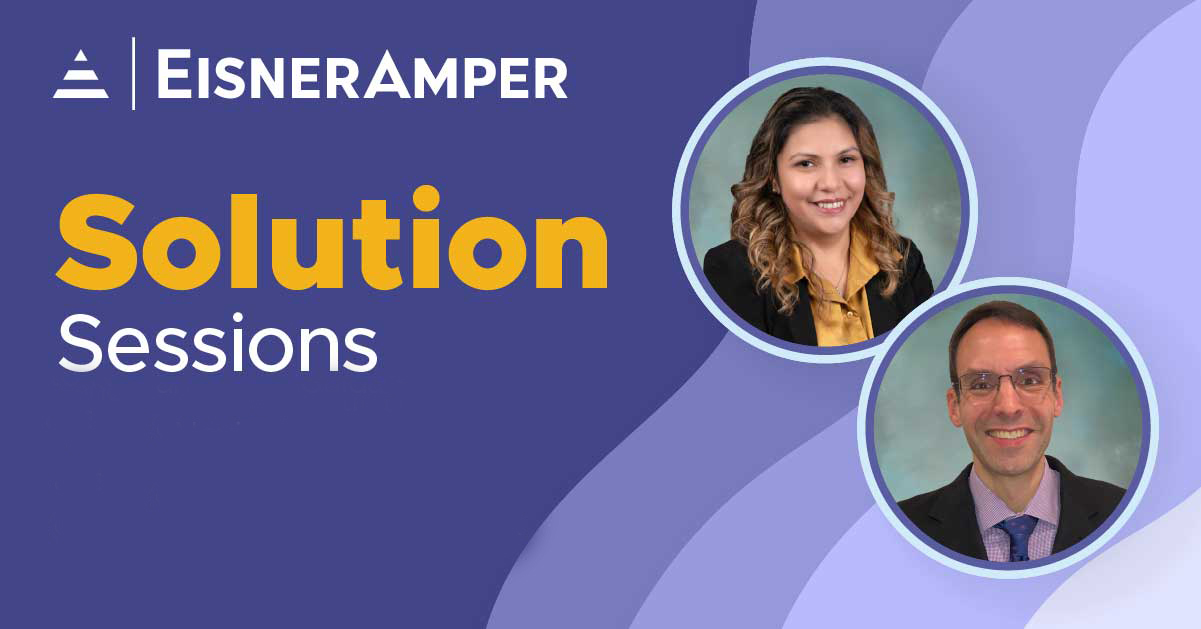Private Equity Investing with an ESG Lens
- Published
- Jul 28, 2023
- Topics
- Share
Brett Hickey, Founder & CEO of Star Mountain Capital, joins our team for a Solutions InSight discussion on opportunities and challenges facing private equity funds in ESG as well as actionable strategies leaders are using to turn them into a competitive advantage.
ESG has been top of mind for the private equity industry, in part due to increased investor demand to incorporate environmental, social, and governance (ESG) factors into their investment strategies.
In this Solutions InSight Session, EisnerAmper spoke with Brett Hickey, CEO, Star Mountain Capital about the opportunities they have seen by prioritizing ESG and how they believe that it can drive long-term value.
They’ve seen a correlation between ESG and higher, more defensive potential returns for all stakeholders, including investors and business owners. ESG investing has been about creating a path, not just telling businesses, "Hey, here's what to do," but helping them do it by bringing resources, relationships, and best practices. An organized structure of business, alignment of the team's values, and the economic alignment of interest within the team contribute to the success of the company.
ESG Strategies Private Equity Investors Can Look for in their Portfolio Companies
When evaluating portfolio companies, a due diligence process is important, and using third-party firms, like EisnerAmper, can help with that process. During due diligence, Star Mountain looks at what companies are doing in terms of ESG strategies.
Environmentally, developing environment-safe impact sectors and seeing that businesses they invest in have strong policies and procedures, even if they are small tasks such as saving plastic bottles.
Socially, they focus on bringing in diversity to make sure they really understand their stakeholders and understand their community. By integrating ESG practices, employees and shareholders understand that the company cares for their well-being beyond a business perspective, which inevitably acquires more clients and increases the retention rate of clients.
Governance is vital from an investment point of view. Investors have the right to governance, so if there are challenges, it is important to know how to navigate them from a legal and administrative standpoint. Having governance allows investors to make safer choices from a regulatory perspective.
This focus on ESG helps companies gain a:
- Strong understanding of potential threats;
- Strong understanding of future opportunities;
- Strong understanding of customers and what they are doing;
- Strong understanding of the value proposition of a business to maintain a profitability margin; and
- Strong understanding of employees and the trends of employees.
Our world is ever-evolving, so just because something worked in the past does not necessarily mean it will work forever. People need time to revamp and refresh their mindsets, and it is imperative to make the time to recognize the necessary changes.
Solutions Insight: Video Series
Solutions InSight is part of our commitment to providing knowledge, strategies, and resources to grow in the new year and beyond. To help you reach your goals, our team has created a library of action-oriented, industry-specific, and solution-driven video sessions, as well as other curated resources.
What's on Your Mind?
Start a conversation with Elana
Receive the latest business insights, analysis, and perspectives from EisnerAmper professionals.



